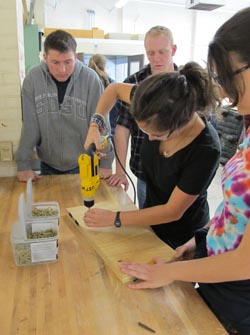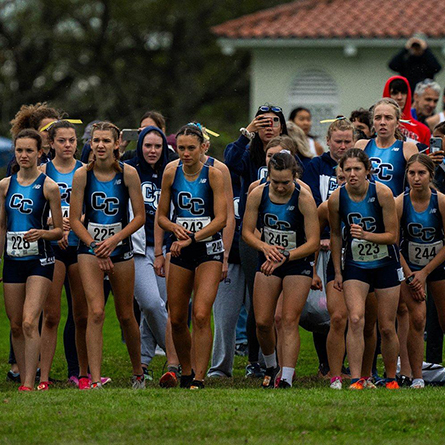
Students help build nesting boxes for endangered birds

Armed with drills, hammers and scissors, Connecticut College students recently spent an entire Saturday helping cadets from the U.S. Coast Guard Academy, officials from the U.S. Fish and Wildlife Service and members of Audubon Connecticut build 200 nesting boxes for endangered roseate terns.
The boxes will replace those that were destroyed during Tropical Storm Irene on nearby Falkner Island (also known as Faulkner's Island), which is part of the Stewart B. McKinney National Wildlife Refuge and where the Coast Guard operates a lighthouse.
"The work these students are doing is vital to the survival of these birds," Shaun P. Roche, a park ranger for the U.S. Fish and Wildlife Service, said as the students worked in the basement of the Coast Guard's McAllister Hall.
Roche explained that Falkner Island, which sits just off the coast of Guilford, Conn., is a major roosting area for roseate terns, and the specially-designed boxes help protect their eggs and young from predators.
Elias Kauders '12, chair of environmental affairs for Connecticut College's Student Government Association, said students were eager to help, and that the tangible goals of the project made it especially appealing.
"We're actually building something here," he said. "Many environmental clubs tend to be concerned with policy or issues in far away countries, but this is something more relatable - this issue is right in front of us."
Lizzy Speece '13 agreed. "This project has a direct effect. Without these homes, many of these birds will die."
Nearly all of the boxes that had been installed on the island were destroyed by Tropical Storm Irene, and power outages across the state forced local officials from U.S. Fish and Wildlife Service to temporarily relocate to the Coast Guard Academy. Without the boxes, officials were worried about what would happen to the birds when they returned to the island to nest in the spring.
They mentioned their concern to Ashley Cordi, the environmental protection specialist for the Academy, and she saw an opportunity for the environmentally minded to make an immediate impact.
"They explained the issue with the terns, I handed it off to our sustainability club and they ran with it," Cordi said.
Justine Morrison, co-president of the Coast Guard's sustainability club, said the project provided the perfect opportunity for the cadets to partner with students from Connecticut College's sustainability clubs. The Coast Guard also recruited volunteers from the New London Science and Technology Magnet School.
The students and cadets worked in an organized assembly line to create the uniquely-shaped bird houses, each with a slanted roof and wire mesh window. As they hammered together pieces of wood and labeled each house with bright red paint, they traded questions about the different life styles on the two campuses and bonded over a shared concern for the environment.
"We think we're worlds apart, but the only real difference between us is where we sent our college application," Morrison said. "We're bonded by our generation. No matter what school, no matter where in the country, environmentalism is important. The opportunity to learn from each other and grow is huge."
- By Sam Norcross '14
December 14, 2011
